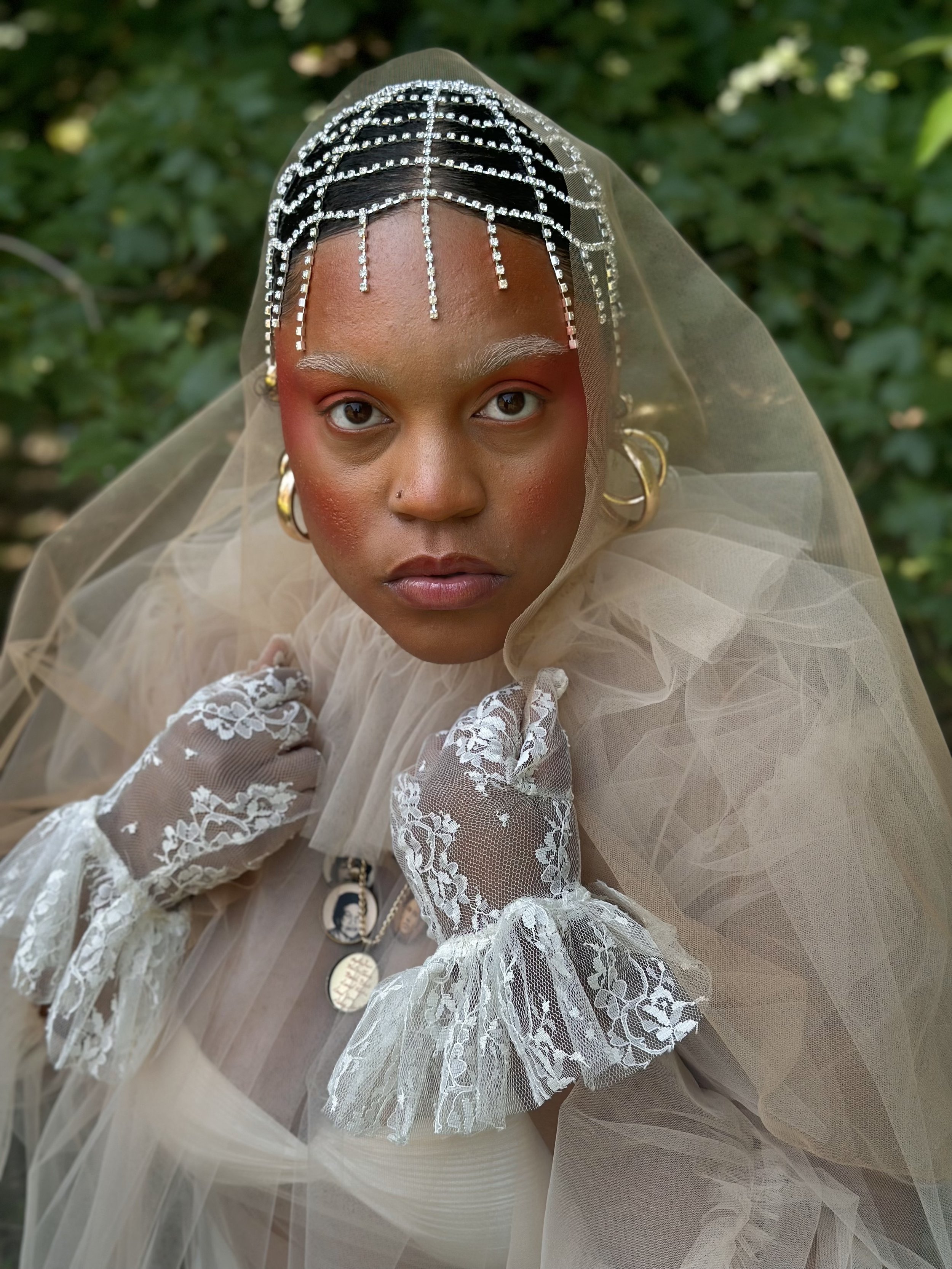Photo by Tiffany Thomas
araminta, the dreamer
BIO
Alivia Blade is a visual artist from Louisville, KY. She lived in Chicago from 2015 to 2020, attended Columbia College Chicago, and received a BA in Graphic Design. Alivia engaged in creating collaborative installation works around memory, childhood, and gender performance at Columbia as well.
In 2020, Alivia began her solo art practice, expanding on explorations of gender performance and black feminism, by creating sculptures with synthetic hair, combs, and styling tools. These works were exhibited in her solo show, wandering home, at houseguest gallery in Louisville, KY, in 2021. In recent years, Alivia’s art practice has developed toward collage work—finding solace in the images of her grandmothers and Harriet Tubman, they’ve become the guiding figures of her collage practice. Alivia continues to create collages honoring her ancestral lineage, investigating Kentucky history, and centering the agency and liberation of black women and femmes.
ARTIST STATEMENT
Daydreams of my grandmothers and Harriet Tubman are the guiding lights of my artistic practice. A friend asked, “Who makes up your cloud of witnesses?”--those who you can lean on in joy and struggle. The figures of my ‘North Star’ began to align organically. Meditating on Harriet and my grandmothers provided me courage and insight into how black women found their agency amid systemic oppression. This led to the creation of an alias within my art practice. I named myself ‘araminta, the dreamer,’ utilizing Harriet’s enslaved name. I resonate with the in-between place of strategizing and preparing for freedom, yearning for liberation beyond my imagination. araminta is a guide, leading wanderers through places of remembrance and dreaming of new liberated realities.
My collage practice is also grounded in the act of gazing upon the found image. I am enamored when sifting through photos of my grandmothers and great-grandmothers, seeing how their beings are still present beyond their passing. I began collecting vintage Ebony magazines and periodicals detailing Kentucky landmarks and histories. Finding images that represent the vastness of blackness and gender expression is also beyond challenging. Recontextualizing is a primary part of my practice—giving new, liberated meaning to images that often hold restricting, archaic narratives.
